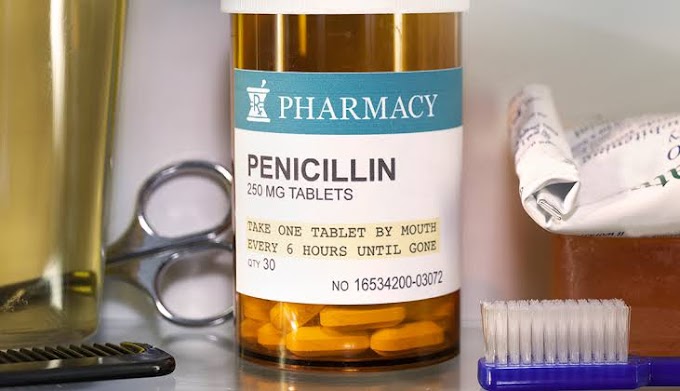Pencillin
Introduction
The penicillins are among the most widely effective and the least toxic drugs known, but increased resistance has limited their use. Natural penicillins (penicillin G and penicillin V) are obtained from fermentations of the fungus Penicillium chrysogenum. Semisynthetic penicillins, such as amoxicillin and ampicillin (also known as aminopenicillins), are created by
chemically attaching different R groups to the 6-aminopenicillanic acid nucleus.
In 1928 Alexander Fleming accidentally discover the antibacterial property of penicillin.
1940 Flore extracted the penicillin from the penicillium culture and analyzed its antibacterial activity.They are destroyed by the enzyme amidase and β-lactamase.The correct structure was analyzed by X-ray crystallography in 1954.
Classification of pencillin
1.Natural penicillins:
Ex: penicillin-G
2. Semi synthetic penicillins
Penicillinase resistance Pencillins
Ex; Methacillin, oxacillin, cloxacillin.
3. Extended spectrum Penicillins
Amino Penicillins:
Ex: Ampicillin, Bacampicillin, Amoxicillin.
4.Carboxy penicillins:
Ex; Carbicillin, Ticarcillin.
5 Ureido penicillins:
Ex; Pipericillin, Mezlocillin
 |
| Pencillin |
Pharmacokinetics
Absorption:
Most of the penicillins are incompletely absorbed after oral administration, and they reach the intestine in sufficient amounts to affect the composition of the intestinal flra. Food decreases the absorption of all the penicillinase-resistant penicillins because as gastric emptying time increases, the drugs are destroyed by stomach acid. Therefore, they should
be taken on an empty stomach.
Distribution:
distribute well throughout the body. All the penicillins cross the placental barrier, but none have been shown to have teratogenic
effects.
Metabolism:
Metabolized by liver.
Excretion:
Excreted through kidneys. Patients with impaired renal function must have dosage regimens adjusted.
Mechanism of Action
Mainly interferes with cell wall synthesis of bacteria.
These drugs inhibit the enzyme transpeptidase which is responsible for cross linkage of peptidoglycan during bacterial cell wall synthesis.
Penicillin-binding proteins: Penicillins also inactivate numerous proteins on thebacterial cell membrane. These penicillin-binding proteins (PBPs) are bacterial enzymes involved in the synthesis of the cell wall and in the
maintenance of the morphologic features of the bacterium.
Clinical uses
Urinary tract infections
Respiratory tract infections
Meningitis
To treat Gonorrhea, Syphilis, typhoid, bacillary
dysentery.
Sub acute bacterial endocarditis.
Bone and joint infections.
Bronchitis, Pneumonia.
Skin and Soft tissue infections.






0 Comments
don,t share any spam, comment and link